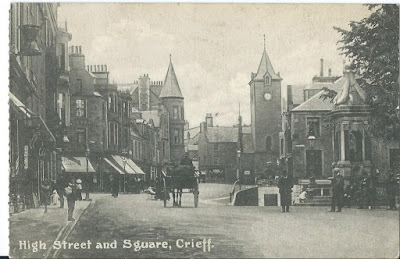
Crieff in the Victorian Era by " Dixon " Printed by HK Brown, 15 King Street 1897 CRIEFF LIFE IN SEPTEMBER 1896 An Original Account To know and understand Crieff as it exists in the year of the Diamond Jubilee of Her Majesty Queen Victoria ,it is necessary in the first place to have some years’ experience in the town , and in the second place to have some sense of observation . There are casts, sets , cliques , and circles , sufficient to make India hide its face in very shame; and there are more public houses , doctors , lawyers , ministers , billiard rooms and churches than in almost any town of the same population in either Scotland , England or Ireland. If you are in one set , you are not in the other , and if you are in the other , your principal duty is to stick to it . You know the sets ...


